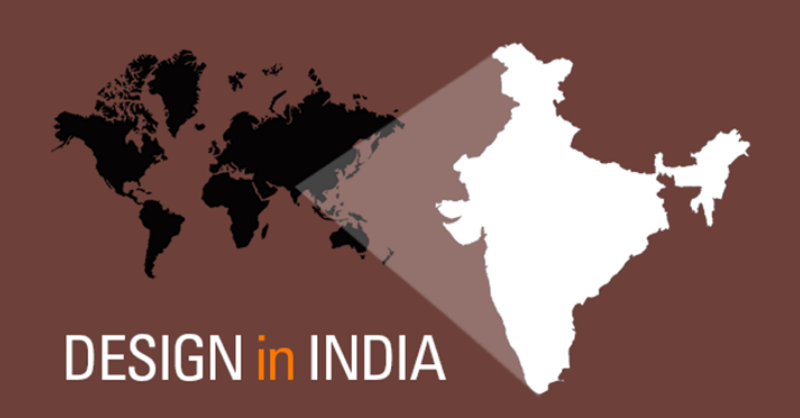Introduction
The application of design in India is decades old. India with its rich culture and a well-established craft tradition always had art and design in every asp
ect of lifestyle. The rituals, practices and festivals in India are all design expressions, with a profound purpose behind them. These traditions and crafts provide wonderful scrim and inspiration towards looking at and understanding modern design.
The vitality of Indian design emerges from its deep cultural roots and its growing economic position. The power of design in an Indian context is enhanced with the large population which requires design so
lutions. Beyond aesthetics, the design has the power to bring change in the lives of people and be an integrator of values, aspirations and culture.
India has a vibrant design industry and an ever-increasing number of design users backed by a strong platform of design education. Indian designers have a diverse mix of talent, insight and experience supported with indigenous heritage.
Design in India has matured over the years and continues to advance from strength to strength.
India has done well so far in terms of producing international quality designers. While qualified designers are few, the quality of designers and quality of training is high.
As Indians, we are not fully there in developing an understanding and appreciation of design and inculcating design culture among our people. We have to make conscious efforts in enhancing the global competitiveness of Indian industry through design.
Design Education In Indian Scenario
“So many people have great ideas, yet they never come to fruition, Innovation is a combination of ideas and hard work …What you create with what you have learned is imperative in this process.”-George Couros.
Traditionally, the design was considered as drawing, sketching which is the domain of the artists. Later, was also confused by crafts and artisans.
However, design has broken these barriers. Designers have become developers of the future –identifying and learning aspects of planning, economics, law, communications, marketing and business skills are essential to this, in addition to learning problem – seeking and creative exploration.
In other words, with design education students learn to think differently across different subject areas; understand their potential to shape and disrupt the world around them; and recognize their responsibility as creators of solutions to a wide range of new social, political and economic realities.
When we talk about design, we think and implement the approach of not rethinking design but redesigning thinking.
As suggested by the University of Stanford, “Design education starts with a metaphor of developing “T – shaped” competence in each student.”
The vertical stem of the “T” is a deep mastery of the relevant discipline. This includes both the analytic disciplines (engineering, business, computing, management, medicine) and the ones traditionally taught at design schools. This is learnt through immersion in the classroom and the design studio.
The horizontal top of the “T” is the integrative understanding that allows a designer to incorporate deep knowledge and skills into a way of evolving designs through doing. It grows out of experience in exercising understanding in the real-world settings.
This along with
- Interdisciplinary approach
- Holistic nature
- Flexi path approach
- System-based and not product-based
provides new opportunities for students to learn design thinking which further bridges their thinking by giving insights and approaches to create preferred solutions.
There is an increase in the awareness about the importance of design education, openness to explore and pursue alternate careers and the propensity to spend more on higher education, the design education sector in India will be extremely attractive in the coming years.
Design institutes are now being recognized as incubators and academic partners by the industry. The industry wants to engage design schools in active research for new products/value chain and sponsor specialist projects.
The design education in India is on the cusp of radical transformation.
Critical Changes Required For Indian Design Education
India is experiencing a growth in design and as per AISHE survey; there is a demand of 60,000 plus designers by 2020 working in a market of potentially INR 1888.32 Billion. We need designers to drive the industry and to discover solutions to deal with challenges of sustainability, smart cities etc.
There is a strong requirement to create design awareness and sensitivity amongst our young generation of students.
Introducing design as a mandatory part of the curriculum, thinking of various possibilities accorded by design, conducive academic environment and integration of technology in curriculum will help in preparing students ready for the industry.
With changing times; students at early age should be sensitized towards creative education. Early start enables us to evolve. Thus, meeting expectations of the students and the industry. Introducing design in a holistic multi-disciplinary manner will enable us to create design professionals who can unify design for aesthetics, business, technological, and sociological concerns.
The new role of design is demanding with much more specialized interdisciplinary skills than those of purely visual and technical syllabus. All this indicates that design education should be prepared to deliver these demands.
There are some areas, which need immediate attention to meet these mandatory requirements –
- Developing a system of independent thinking
- Critical Thinking
- Application of life skills -Leadership, team building
- Creative skills
- Communication
- Open-source learning
- Experiential learning
- AI, technology, automation and above all
- EMPLOYABILITY.
As the market for design is huge, a number of quality designers have to grow exponentially, which means the development of efficiencies to meet the requirement.
The design needs a push to be thought of as a mainstream and not value-added service to make a difference to the entire economy of our country.
For More Such Articles, News Update, Events, and Many More Click Here.

Prof. Manika Walia
Dean School Of Creativity,Rishihood University, Sonipat
As an Academic Administrator and Professor of Design, she believes that the understanding of subject matter is important.



